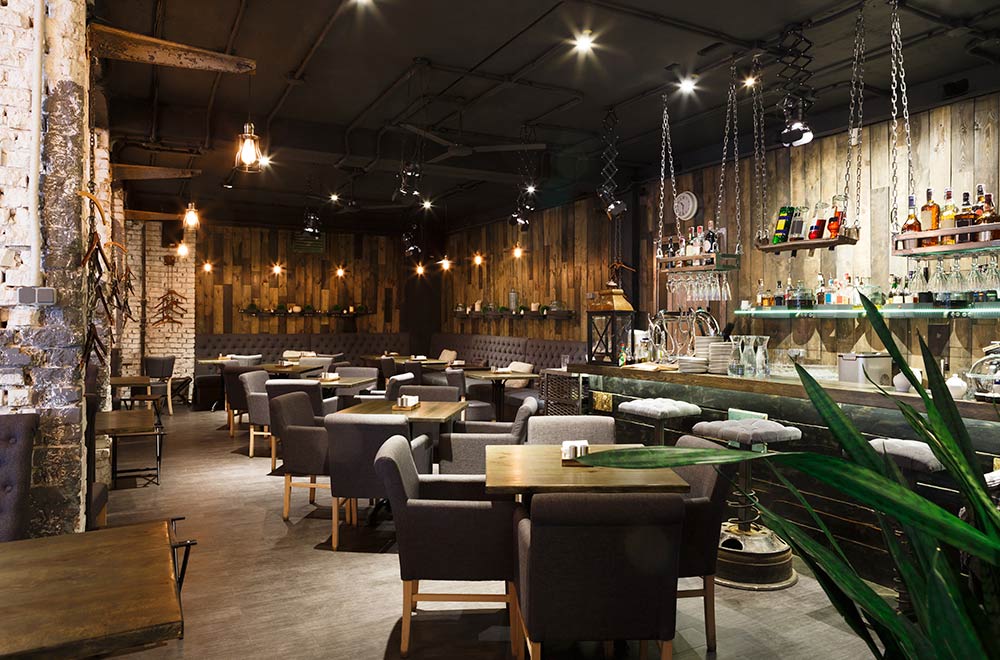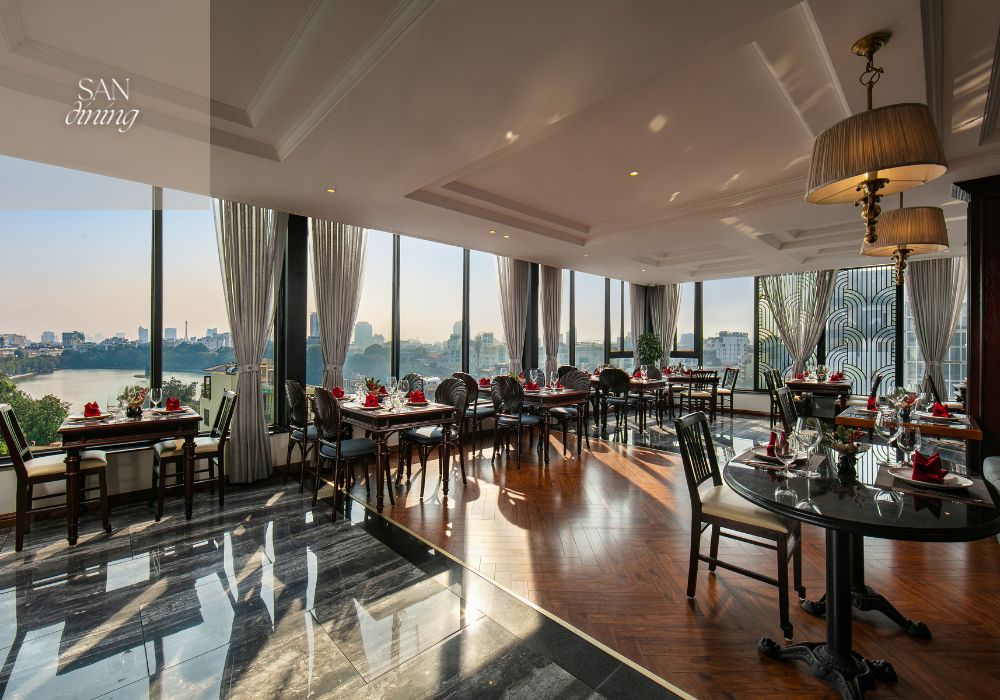Fine Dining Experience Islamabad: Delight In Glamorous Culinary Pleasures
Fine Dining Experience Islamabad: Delight In Glamorous Culinary Pleasures
Blog Article
Savor Genuine Asian Cuisine With a Pan-Asian Spin for a Cooking Adventure
Beginning on a culinary journey via genuine Oriental cuisine, boosted with a Pan-Asian spin, offers an one-of-a-kind chance to explore the rich tapestry of flavors that define the area's varied culinary customs. This experience invites you to relish the charming balance of preferences-- sweet, salted, spicy, and sour-- balanced by fragrant herbs and seasonings. Envision the innovative blend of Thai curry and ramen or the unexpected pleasure of sushi burritos. As you ponder these tempting recipes, think about the cultural narratives and historical impacts that shape them, each bite using a story waiting to be discovered.

Discovering Pan-Asian Flavors
In the world of worldwide gastronomy, Pan-Asian cuisine attracts attention for its remarkable diversity and the harmonious interplay of flavors from various Oriental societies. This culinary method commemorates the distinct components and abundant practices located across the continent, producing a tapestry of preferences that is both rewarding and fascinating. Trick to Pan-Asian cuisine is its capacity to balance different tastes-- sweet, salty, spicy, and sour-- while highlighting the freshness and high quality of each ingredient.
From the umami-rich soy sauce of Japan to the intense chili peppers of Thailand, Pan-Asian cuisine provides a comprehensive scheme of tastes. These components are frequently integrated in inventive methods, improving meals with layers of intricacy. For example, the use of aromatic herbs such as lemongrass and cilantro, typical in Vietnamese and Thai food, adds a rejuvenating brightness to recipes, while the unification of coconut milk provides a luscious, abundant texture.
The focus on fresh fruit and vegetables and fragrant seasonings ensures that each dish is not only a feast for the taste yet likewise for the senses. Pan-Asian cuisine invites restaurants to start a culinary journey, discovering the vast and differed landscapes of Eastern gastronomy with every bite.
Blend Meals to Try
While Pan-Asian food is commemorated for its traditional flavors, the contemporary culinary landscape is significantly welcoming fusion meals that blend these timeless aspects with impacts from other regions. This cutting-edge strategy not only honors the rich heritage of Eastern culinary arts but likewise presents novel taste experiences that appeal to modern tastes buds.
A prime example of such a combination dish is the Korean-Mexican taco, where marinaded bulgogi beef is covered in a cozy tortilla, covered with kimchi and a spicy gochujang-infused salsa. This mix marries the vibrant, full-flavored tastes of Korea with the vivid, fresh components of Mexican food. Likewise, sushi burritos have actually acquired appeal, amalgamating the delicate artistry of Japanese sushi with the passionate, hand-held convenience of a burrito, frequently including combination active ingredients like tempura shrimp and avocado with a drizzle of wasabi mayo.
Another significant recipe is Thai curry ramen, which infuses the luscious, fragrant spices of Thai curry right into the soothing broth of standard Japanese ramen, creating a harmonious mix that entices the senses. These combination dishes expand beyond plain uniqueness; they stand for a cooking discussion in between societies, encouraging expedition and advancement in the globe of Pan-Asian cuisine.
Crucial Active Ingredients and Spices
To absolutely appreciate Pan-Asian cuisine, one should comprehend the crucial components and flavors that develop its structure. This diverse cooking design attracts from an abundant tapestry of Oriental practices, using a harmonious mix of tastes and appearances.
Fragrant elements are critical, with garlic, lemongrass, and ginger being common throughout numerous Pan-Asian recipes. These active ingredients provide a fragrant base that improves the complexity of flavors. Flavors such as star anise, cardamom, and cinnamon introduce heat and personality, resembling influences from why not try this out areas like China and India.

Food Preparation Strategies and Tips
Mastering the art of Pan-Asian food calls for familiarity with its unique cooking techniques, each adding to the vivid tapestry of tastes this culinary tradition is commemorated for. Central to these techniques is the stir-fry, a rapid food preparation method that preserves the dietary honesty and dazzling shades of components. Using a frying pan, the stir-fry method allows for also warm circulation, necessary for accomplishing the particular structure and taste balance of Pan-Asian meals.
An additional basic method is steaming, particularly prevalent in Chinese cuisine. This mild approach preserves the all-natural flavors and nutrients of ingredients, making it perfect for fish and shellfish and vegetables. Dumplings, a beloved staple, frequently benefit from steaming, causing soft, succulent appearances.
Grilling, also indispensable, gives great smoky midsts to meals such as Korean bulgogi or Japanese yakitori (best asian restaurant Islamabad). This technique typically involves marinating ingredients, enabling tastes to pass through deeply prior to food preparation over an open fire or warmer
Last but not least, grasping the art of stabilizing tastes-- pleasant, sour, salted, bitter, and umami-- is important. Correctly layering official statement these elements can boost a recipe from normal to remarkable, using a facility and satisfying culinary experience that embodies the significance of Pan-Asian cuisine.
Eating Experiences Worldwide
Around the world, Pan-Asian food uses an unparalleled eating experience, commemorated for its abundant tapestry of tastes and vibrant presentations. This culinary sensation has actually transcended social borders, catching the hearts and tastes of food lovers worldwide. In cosmopolitan cities like New York, London, and Sydney, Pan-Asian dining establishments act as fusions where cooking practices from Thailand, Japan, China, and past assemble, providing diners with an eclectic mix of dishes that highlight the area's variety.
The international charm of Pan-Asian cuisine lies in its capacity to use both credibility and innovation. Chefs skillfully wed conventional active ingredients such as lemongrass, soy sauce, and miso with contemporary strategies, leading to recipes that are both acquainted and refreshingly brand-new. This blend enables diners to start a culinary journey that respects heritage while accepting modernity.
Additionally, dining experiences are boosted through attentively made settings that mirror the ethos of Pan-Asian looks. From minimalist Japanese-inspired interiors to lively Thai-themed rooms, each dining establishment offers an unique important site ambiance that matches the culinary offerings. Consequently, customers are not just taking in a meal yet partaking in a cultural experience, making Pan-Asian eating an absolutely worldwide sensation.
Conclusion
The exploration of Pan-Asian food provides a profound understanding of the detailed interaction of tastes and culinary customs across Asia. By welcoming fusion dishes such as Thai curry ramen and sushi burritos, the cooking trip not only highlights the flexibility of typical components yet additionally showcases cutting-edge modern-day methods. This gastronomic experience, enhanced by vital seasonings and cooking techniques, provides an unique chance to value the social diversity and cooking artistry that define Pan-Asian food on a worldwide range.
Beginning on a culinary trip with authentic Oriental food, improved with a Pan-Asian twist, offers a special opportunity to check out the rich tapestry of tastes that define the area's varied cooking practices.In the realm of worldwide gastronomy, Pan-Asian cuisine stands out for its impressive diversity and the harmonious interaction of tastes from numerous Asian societies. Key to Pan-Asian cuisine is its ability to stabilize contrasting flavors-- pleasant, salted, spicy, and sour-- while highlighting the freshness and high quality of each active ingredient.

Report this page